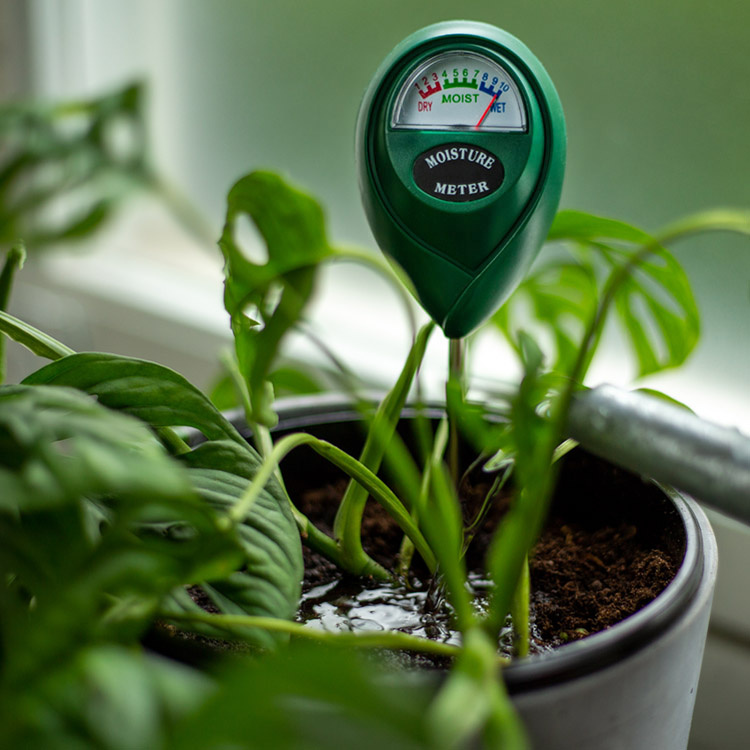The Ultimate Guide to Selecting the Right Moisture Meter for Your Requirements
The Ultimate Guide to Selecting the Right Moisture Meter for Your Requirements
Blog Article
Look Into the Globe of Moisture Meters: Whatever You Required to Know
In the world of moisture meters lies a world of accuracy and functionality that typically goes unnoticed. These tools, while relatively straightforward, hold a wide range of info that can considerably influence numerous industries and applications. Comprehending how moisture meters run, the different kinds readily available, and their varied uses can clarify their importance in making sure high quality and efficiency. By checking out the ins and outs of moisture meters, one can reveal an important device that transcends plain measurement, supplying insights that can make a significant difference in countless fields.
Exactly How Moisture Meters Work
Moisture meters run by measuring the electrical conductivity or capacitance of materials to establish the moisture material existing. These meters are invaluable tools across numerous sectors, including building, farming, and woodworking. By using different techniques such as pinless or pin-type modern technology, dampness meters provide accurate readings that help experts make notified decisions.
Pin-type moisture meters work by putting the sharp pins right into the material being evaluated. On the other hand, pinless dampness meters make use of electro-magnetic signals to scan a bigger location without triggering any damages to the product's surface.
Regardless of the approach made use of, wetness meters play an important role in preventing concerns such as mold growth, architectural damage, or product flaws brought on by excess moisture. Recognizing exactly how these meters work is crucial for making sure the high quality and stability of products in various applications.
Types of Moisture Meters
Offered the essential function moisture meters play in different industries, it is important to comprehend the different types readily available to experts for accurately examining moisture degrees - Moisture Meter. There are primarily 2 main kinds of dampness meters: pin-type and pinless dampness meters

On the other hand, pinless wetness meters use electro-magnetic sensing unit plates to scan a bigger area of the product without causing any type of damages. This type appropriates for rapidly scanning huge areas and is frequently used for flooring, wall surfaces, and ceilings. Pinless meters are convenient for taking analyses on completed surfaces without leaving any type of noticeable marks.
Both sorts of wetness meters have their benefits and are chosen based upon the details requirements of the task handy. Understanding the distinctions in between these types is vital for specialists to make accurate wetness analyses.
Applications Throughout Industries
Building professionals depend on moisture meters to examine the moisture levels in structure materials like concrete, drywall, and wood, which is vital for maintaining architectural honesty and avoiding concerns like rot or mold. The floor covering sector uses dampness meters to measure the wetness web content in subfloors before setting up numerous flooring coverings, stopping pricey damages due to excess wetness. In the food sector, dampness meters are used to keep an eye on and regulate moisture levels in products such as grains, nuts, and dried fruits to preserve quality and quality.
Tips for Using Wetness Meters
Make use of the dampness meter's calibration setups to make certain exact analyses when determining the wetness content in various products. In addition, make certain the meter is set to the appropriate moisture range for the product you are gauging to acquire the most accurate results.
When making use of a pin-type dampness meter, place the pins to look at this now the suitable depth advised for the product being checked. This guarantees that the moisture analyses are drawn from the appropriate depth within the product, supplying a more exact depiction of its moisture content. For pinless dampness meters, keep in mind to maintain correct contact with the product's surface area to get trusted analyses.
On a regular basis check and change the batteries in your moisture meter to protect against incorrect analyses due to reduced power. When not in use to lengthen its lifespan and preserve its precision, Store the meter in a dry and risk-free place. By complying with these pointers, you can take full advantage of the efficiency of your moisture meter and acquire specific moisture material dimensions throughout various materials.
Maintenance and Calibration
To make sure the precision of wetness web content measurements, routine maintenance and calibration of the moisture meter are vital steps in its proper functioning. Calibration readjusts the dampness meter to make certain that it supplies constant and reputable outcomes.
Calibration should be done periodically, specifically if the wetness meter is used often or in crucial applications where specific measurements are called for. By adjusting the moisture and preserving meter routinely, customers can trust the accuracy of the dampness material dimensions obtained.
Final Thought

To conclude, wetness meters play a vital role in various markets by properly gauging the moisture content of materials. Comprehending just how these tools work, the different types offered, and appropriate upkeep and calibration are redirected here essential for obtaining reputable results. Whether in manufacturing, construction, or agriculture, the use of moisture meters helps ensure quality assurance and efficiency in processes.

In conclusion, wetness meters play a vital duty in various markets by precisely measuring the dampness web content of materials.
Report this page